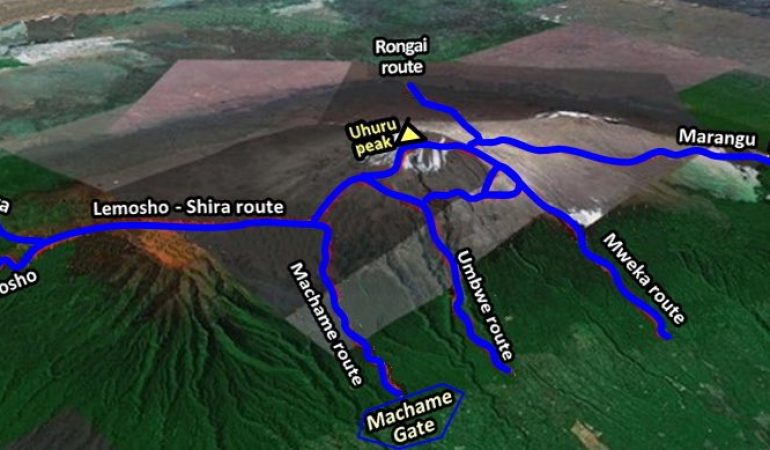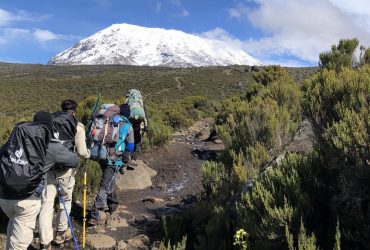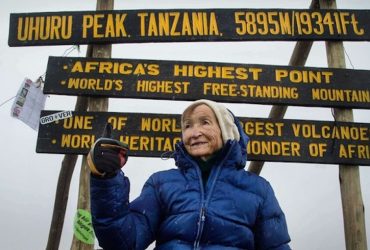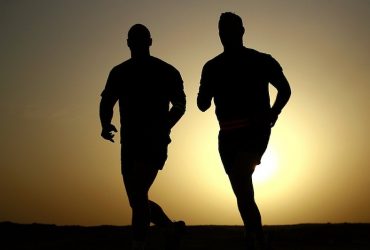Choosing a Climbing Route on Kilimanjaro
There are seven approved and well established routes for climbing Mount Kilimanjaro which range from five to nine days of minimum required climbing time. Choosing the right route for climbing Kilimanjaro is an essential trip-preparation step, and being unrealistic about which route is best for you personally and your group as a whole can make or break your trip – and sometimes your body.
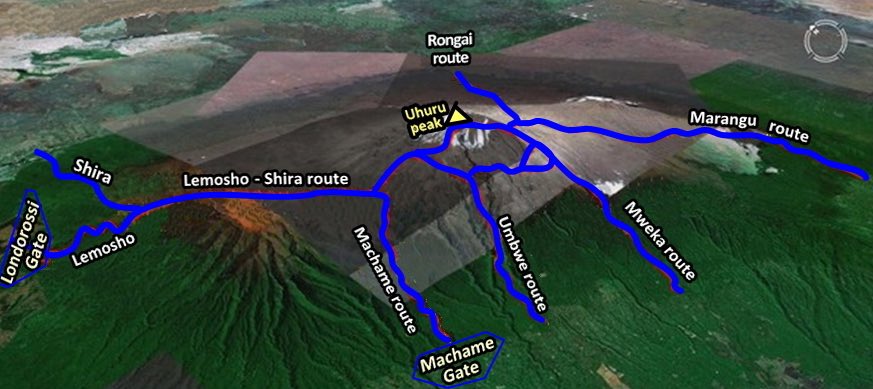
NOTE: This is part 3 of a multi-part blog series on climbing Mount Kilimanjaro. Be sure to check out the other parts detailing various aspects and phases of our preparation, trip logistics, and the climb, all linked at the end of each article. And definitely don’t miss the vlogging video compilation at the end.
Skill and experience at mountaineering along with your personal fitness level are the main factors that should go into a decision about which route to take up Mount Kilimanjaro. A lessor factor is the time required to realistically traverse the route, since most routes only vary by a day or two.
Only the Northern Circuit requires a full nine days, although this is more of a “scenic route” and nowhere near the most efficient ascent path. The shortest routes are the Marangu Route and the Umbwe Route, which are at opposite ends of the difficulty spectrum. Both of these routes can, in theory, be done in a minimum of five days, although such rushing is not advisable.
The Umbwe Route is rated as the most difficult route to climb Mount Kilimanjaro, and in reality about seven days are needed to safely take this route. The Marangu Route, however, is considered the most manageable route for first-time climbers – so much so that it’s nicknamed the “Coca-Cola Route.”
While you can do the Marangu Route in five days, doing so skips the extremely important acclimatization day, which gives climbers some much needed rest and a critical altitude adjustment period mid-way through the ascent. While no net ground is gained on this day, you’re by no means just sitting around bored all day at the camp either.
In order to facilitate the acclimatization process, you usually take a short two-hour hike further up the mountain to a spot called Zebra Rocks and then descend again overnight to the altitude of the Horombo Camp in order to allow your body enough time and space to produce some extra red blood cells to help with the higher altitudes and rigor that lay ahead.
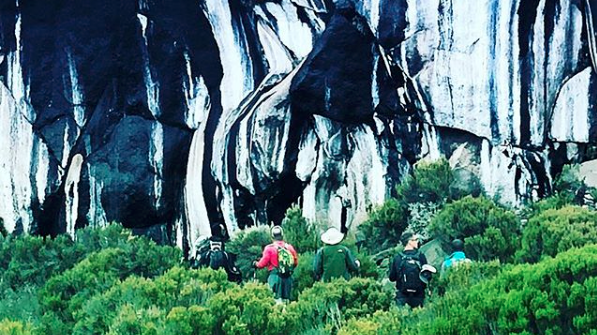
The Marangu Route is also the only path up Kilimanjaro that has enclosed wooden huts, toilets, and running water at each camp site. These can be incredibly important and welcome creature comforts for those who aren’t used to roughing it in tents out in the cold and doing your business in “toilet tents” – or worse, out in the bush.
For those willing to rough it a little more, the Rongai Route is another good choice for first- or second-time climbers, with a moderate difficulty level, great scenery, and less traffic. Unlike the Marangu Route, though, the Rongai Route does not have enclosed huts available for sleeping, toilet facilities, or running water along most of the route. However, the Rongai Route does meet up with the Marangu Route at the Kibo Camp, so at least the facilities of that camp would be available to Ronagi Route climbers while there.
The Machame and Shira Routes can each be done in six or seven days and both have amazing scenery, although they both are also rated at higher difficulty levels and are more suited for experienced climbers. The same can be said for the Lemosho Route, although it requires an additional day or two (seven or eight total) to complete safely.
So to sum up the big route choice decision for planning a Mount Kilimanjaro trip, more inexperienced climbers should stick to the Marangu (aka “Coca-Cola”) Route or the Rongai Route, depending on the desired level of built-in creature comforts. If you want as many as can be had in such remote environment, Marangu is the way to go. If you love camping and roughing it, the Rongai Route would be another great option for you.
For more experienced mountaineers, you can consider the more challenging Shira and Machame Routes if you think about seven days will be enough time for you on the mountain, or you can go for the Lemosho Route or Northern Circuit if you have eight or nine days, respectively, to spend up there traipsing around.
And finally, the Umbwe Route should only be seriously considered by seriously experienced climbers in peak physical condition. This route is no joke because you’re afforded so little time to acclimatize. So unless you’re an experienced climber who lives in a high-altitude locale to begin with, take a pass on this route.
So there you have it. Each route up Kilimanjaro has unique requirements combined with unique offerings and is geared towards unique climber profiles. Once you figure out what amenities you want and then throw your experience and desired time on the mountain into the mix, the right route for your trip should actually reveal itself somewhat formulaically.
Whether you take on the challenge of the hardest route or opt for the “easiest” way up, you really can’t go wrong when it comes to the experience offered and the feeling of accomplishment you’ll surely have in the end. Climbing Mount Kilimanjaro is a bucket list experience because it simply unforgettable, and virtually no one regrets the decision to commit and do it.
So what are you waiting for? Oh yeah… you have to finish reading the other articles in this blog series first. So get to it.
Other Featured Articles in the Climbing Kilimanjaro Series:
Part 1: Climbing Mount Kilimanjaro – The Intro
Part 2: Preparation and Training for Kili
Part 3: Choosing a Climbing Route on Kilimanjaro
